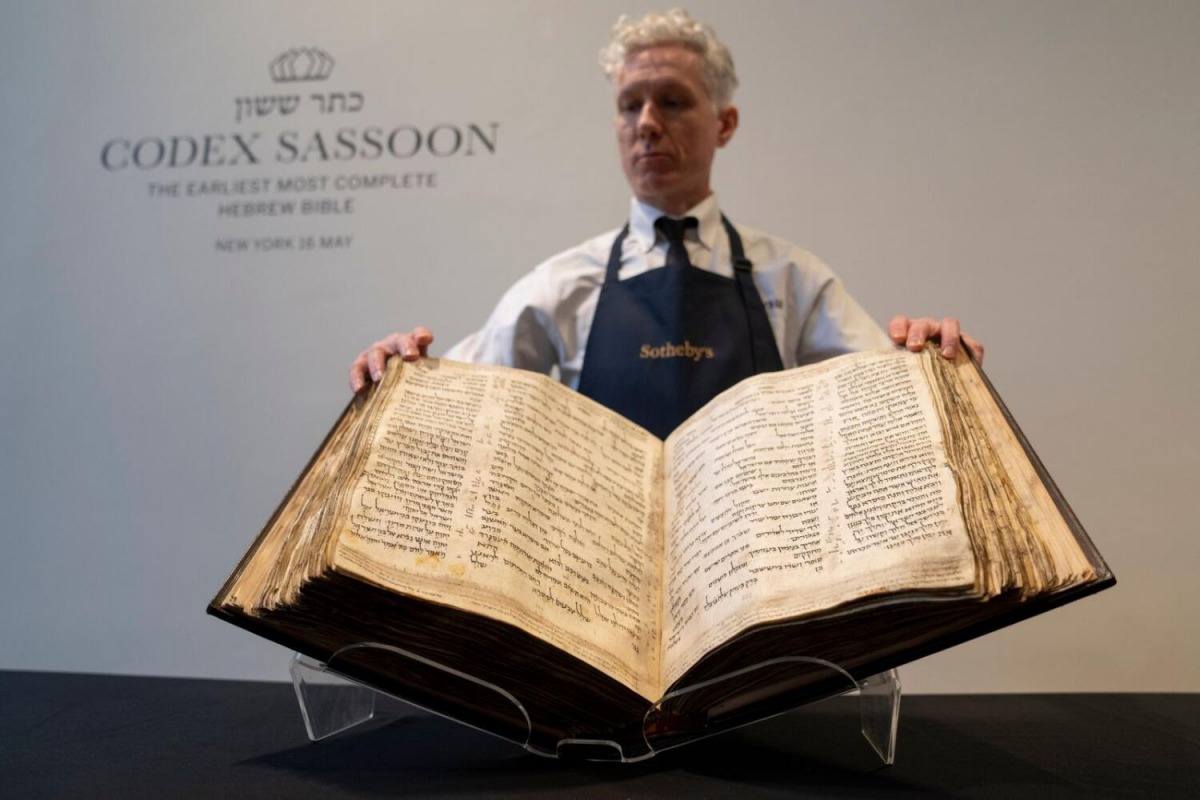This one-thousand-year-old Bible, described as one of the most important and singular texts in human history, is now the most valuable and important manuscript that has ever been auctioned off. The Sassoon Codex, which dates back to the late 9th century or the beginning of the 10th century, was sold for $39,1 million dollars at Sotheby’s in the city of New York this Wednesday. It is believed to be the oldest and most complete Hebrew Bible. The last manuscript to break sales records was the Codex Leicester by Leonardo Da Vinci, which was sold for $30,8 million dollars in 1994, according to Sotheby’s.
Even though the Codex Sassoon did not top its sale estimate of $50 million dollars, it stills holds an impressive record and was exhibited in the United Kingdom and Israel before the auction. Referring to this event, books and manuscripts senior specialist, Sharon Mintz, said that “this is the most important document to come to auction ever.”
This manuscript includes 792 pages made of animal’s skin, and it weights around 26.5 pounds (or about 12 kg). It is also described as a “lavish production that only the wealthiest could have afforded.” The last owner obtained the codex in 1989 and was “delighted to be able to share it with the world,” in the words of Mintz.
It is believed to be the first codex or manuscript, in the form of a book, in the Hebrew Bible. During centuries prior to its writing, there were only parts or sections of biblical texts in scroll form, but these did not have verses, chapters or punctuation, according to Sotheby’s.
This document and the Codex Aleppo, which were stored in the Israel Museum in Jerusalem back in 1958, are the only two codices which date back to the 10th century and contain almost all the Hebrew Bible in their pages. However, according to the Israel Museum, the Aleppo Codex was severely damaged during a fire in 1947 and only 295 original pages out of the 487 it had survived it. In comparison, the Sassoon Codex is only missing 12 pages and because of this, it is the “oldest and most complete copy of a Hebrew Bible in the world,” in the words of Sotheby’s.
The historic importance of this codex is also in the annotations and inscriptions that were written over the years, which point out the journey it has had in terms of culture and tradition. This manuscript has had several owners.
For instance, one of its entries in the early eleventh century talks about being sold to Isaace ben Ezekiel al-Attar, who later transferred the codex to his two children. Following this, it was taken to the Makisin synagogue, which was later destroyed, and the manuscript was given to Salama bin Abi al Fakhr, who promised to take it back to the synagogue when it was rebuilt. However, this never happened and the codex continued wandering until it was acquired by Sassoon in 1929.

